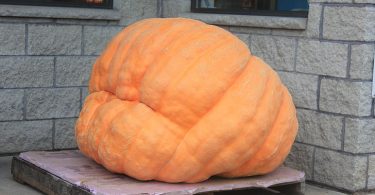Growing your own carrots is simple as long as you prepare the soil and take good care of the seedlings. Following is a step-by-step guide on how to grow this veg for yourself, enjoy it and save some money from your weekly grocery shopping
Preparation
A sunny spot is ideal for growing carrots. Once the spot is chosen, you should break up the clods of soil to create an aerated structure, removing large stones as you go along. Heavy, compact soil will make it difficult for the seedlings to grow strong long roots.
Manure shouldn’t be added to soil reserved for growing carrots. The nutrients in it are too much for them, a small amount of general fertilizer applied a week before sowing is enough. If the preparation is carried out beforehand, carrots will be ready for planting in March.
Sowing
Just before spreading the seeds, the soil should be raked over until it forms ‘tilth’ – crumbly fine soil. Mark a row with a twine or spade to create a 2cm-deep furrow. Seeds should be sown thinly – around one or two seeds each 2 or 3cm. then cover up the seeds and firm the row gently. If the weather has been dry a light watering can be given. Rows should be spaced 15cm apart.
tip : if you are as butter-fingered as I am, it’s best if you pour some seeds into your hand instead of sowing directly from the bag. Sparse sowing is essential to avoid too much thinning out later, as the scent of bruised leaves will attract pests.
Crop carrots take between 10 and 16 weeks to mature. For an early harvest, many gardeners sow fast-maturing carrots simultaneously with their main crop. Sowing them in alternate, labelled rows will make them easy to identify.
Thinning
Carrot seedlings sprout 2-3 weeks after sowing. Once they’re big enough to handle safely, weaker seedlings should be removed. When thinning carrot plants, great care must be taken not to bruise or break the leaved and stalks. This is because the carrotfly, a pest to the carrot, is attracted to the crop by the smell of bruised leaves. The discarded plants should be burnt or buried straight after removal.
tip: Some gardeners recommend thinning in the evening to reduce the incidence of the carrot fly. Firming and watering of the remaining seedlings is also said to reduce the incidence of this pest. Leaving 5-8cm between the remaining seedlings is ideal for healthy growth. Regular watering and hoeing down between the rows will keep the plants pest-free and healthy.
Stopping flies
Another pesticide-free control against carrot flies is using fine netting to cover the seedlings and the soil next to them. The carrot fly is around 1cm long, and fine netting will reduce the chance of it being able to lay its eggs in the soil around the carrot. Fly larvae hatch underneath the soil surface and feed on the carrots, resulting in a depleted or low-quality crop. Grass and leaf mulch may also deter the flies as it makes laying eggs in the soil harder.
Taking care of & harvesting young carrots
Early carrots are reading for harvesting 7-10 weeks after sowing. A tell-tale sign that shows carrots are ready for pulling is that the foliage will begin to wither. In time the average gardener will get used to the timing of different varieties and can also enjoy the crop when it’s slightly immature. You can always experiment by pulling up a few ;). In the weeks before harvesting the soil should be left moist at all times with regular watering. Evening harvestings are ideal to reduce the incidence of the fly… and it’s best to flatten the soil and water it just after harvesting.






